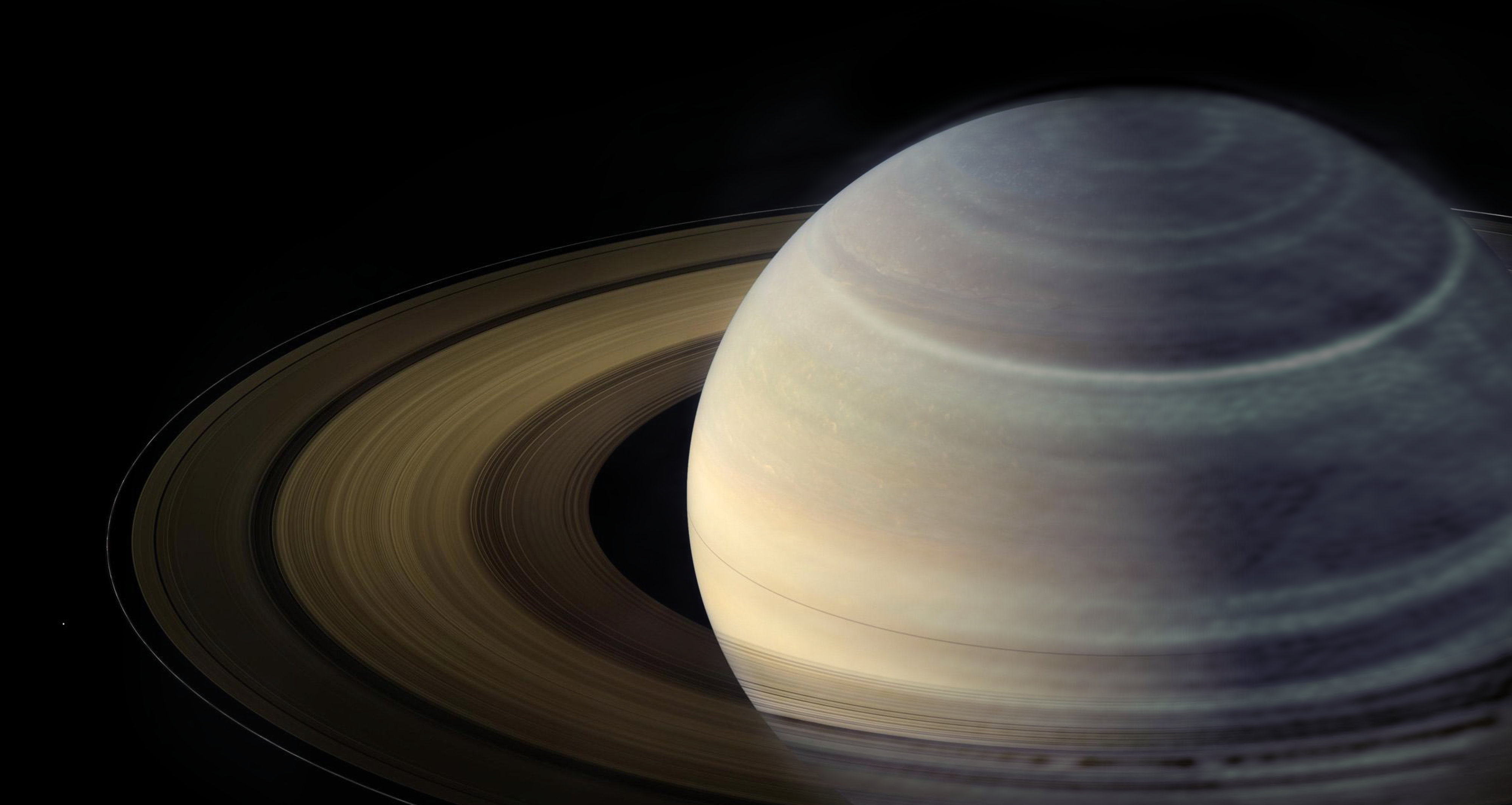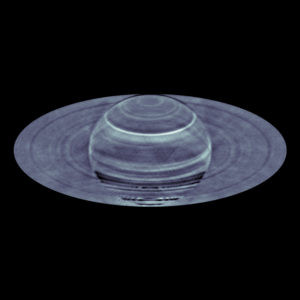AUI will present at the 247th meeting of the American Astronomical Society in Phoenix from January 4-8.
Recent News
ALMA Helps Unmask Monster Black Hole Behind Record-Breaking Cosmic Burst
Astronomers have used the Atacama Large Millimeter/submillimeter Array (ALMA) together with a suite of space- and ground-based telescopes, to study AT 2024wpp, the most luminous fast blue optical transient (LFBOT) ever observed.
Astronomers Make First Radio Detection of Rare Supernova Type, Revealing Secrets of Stellar Death
Astronomers using the U.S. National Science Foundation Very Large Array have captured the first-ever radio signals from a rare class of stellar explosion known as a Type Ibn supernova.
VLA Finds Megastorms on Saturn Disrupt Gas Giant’s Deep Atmosphere in Surprising Ways

This composite of Saturn shows VLA data overlaid on a Cassini closeup of Saturn and shows the atmosphere in stark detail. Credit: S. Dagnello (NRAO/AUI/NSF), I. de Pater et al (Berkeley)
1. Study of Saturn’s deep troposphere reveals major storm-centric atmospheric disruptions
A study of rare megastorms on Saturn using data from the National Science Foundation’s Karl G. Jansky Very Large Array has revealed disruptions in the distribution of ammonia gas in the planet’s deep atmosphere. The findings raise questions about just how different gas giants can be from each other, and challenge scientists’ understanding of how megastorms may form on planets other than Earth. The results of the study appear in Science Advances.

When seen in the optical, Saturn’s banded atmosphere appears to smoothly shift from color to color. But seen here in radio light, the distinct nature of these bands is apparent. Scientists used VLA data to better understand ammonia in the gas giant’s atmosphere and learned that megastorms transport the ammonia from the upper to the lower atmosphere. Credit: S. Dagnello (NRAO/AUI/NSF), I. de Pater et al (Berkeley)

When seen in the optical, Saturn’s banded atmosphere appears to smoothly shift from color to color. But seen here in radio light, the distinct nature of these bands is apparent. Scientists used VLA data to better understand ammonia in the gas giant’s atmosphere and learned that megastorms transport the ammonia from the upper to the lower atmosphere. Credit: S. Dagnello (NRAO/AUI/NSF), I. de Pater et al (Berkeley)
2. It takes radio eyes to see what these storms are doing to Saturn
Megastorms occur approximately every 20-30 years and are similar to hurricanes on Earth, although significantly larger. But there is one major difference: on Earth hurricanes draw their energy from the underlying warm ocean. On Saturn hurricanes form without oceanic assistance. That led the team to wonder how weather patterns form on the gas giant, what energy is sustaining them, and what other unique mechanisms or outcomes result from them. To find out more about these giant storms, the team had to probe layers in the atmosphere below the clouds, which are invisible to the human eye. That’s why the team turned to the VLA.
Imke de Pater, an astronomer at UC-Berkeley, and a co-author on the study, has been studying gas giants with the VLA for over four decades to better understand their composition and what makes them unique. “At radio wavelengths, we probe below the visible cloud layers on giant planets. Since chemical reactions and dynamics will alter the composition of a planet’s atmosphere, observations below these cloud layers are required to constrain the planet’s true atmospheric composition, a key parameter for planet formation models,” she said. “Radio observations help characterize dynamical, physical, and chemical processes including heat transport, cloud formation, and convection in the atmospheres of giant planets on both global and local scales.”
3. Megastorms have put ammonia on the move
With the power of radio to look beyond the clouds in the troposphere, the team found something surprising: anomalies in the concentration of ammonia gas in Saturn’s atmosphere, which they connected to the past occurrences of megastorms in the planet’s northern hemisphere. According to the team, the concentration of ammonia is lower at mid-altitudes in the atmosphere but has become enriched at lower altitudes. They believe that the ammonia is being transported from the upper to the lower atmosphere via the processes of precipitation and re-evaporation. What’s more, that effect can last for hundreds of years.
4. Saturn is really nothing like Jupiter after all and that could have implications for future research
The study further revealed that although both Saturn and Jupiter are both made of hydrogen gas, the two gas giants are remarkably dissimilar. While Jupiter does have tropospheric anomalies, they have been tied to its zones— whitish bands— and belts— darkish bands, and are not caused by storms like they are on Saturn. This considerable difference between these neighboring gas giants is challenging what scientists know about the formation of megastorms on gas giants and other planets and may inform how they’re found and studied on exoplanets in the future.
Cheng Li, an astronomer at the University of Michigan-Ann Arbor, and the lead author of the study said, “Understanding the mechanisms of the largest storms in the Solar System puts the theory of hurricanes into a broader cosmic context, challenging our current knowledge and pushing the boundaries of terrestrial meteorology.”
About NRAO
The National Radio Astronomy Observatory (NRAO) is a facility of the National Science Foundation, operated under cooperative agreement by Associated Universities, Inc.
Resources
“Long lasting, deep effect of Saturn’s giant storms,” Li, C. et al, 2023. Science Advances, doi: 10.1126/sciadv.adg9419
This news article was originally published on NRAO website on August 11, 2023.
Recent News
AUI to Attend AAS 247 Conference
AUI will present at the 247th meeting of the American Astronomical Society in Phoenix from January 4-8.
ALMA Helps Unmask Monster Black Hole Behind Record-Breaking Cosmic Burst
Astronomers have used the Atacama Large Millimeter/submillimeter Array (ALMA) together with a suite of space- and ground-based telescopes, to study AT 2024wpp, the most luminous fast blue optical transient (LFBOT) ever observed.
Astronomers Make First Radio Detection of Rare Supernova Type, Revealing Secrets of Stellar Death
Astronomers using the U.S. National Science Foundation Very Large Array have captured the first-ever radio signals from a rare class of stellar explosion known as a Type Ibn supernova.
